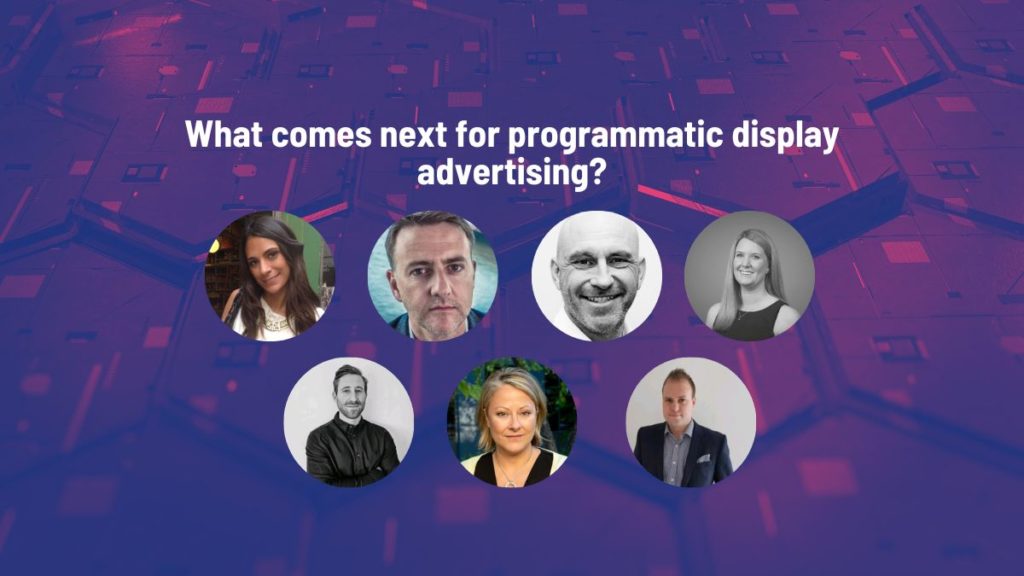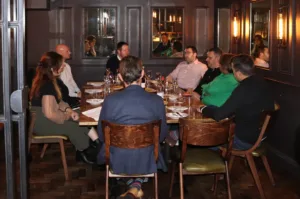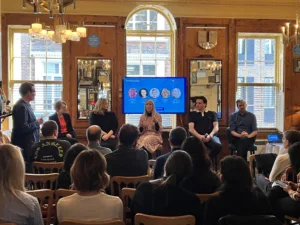Despite an unprecedented slump at the start of the pandemic period in 2020, media spending on programmatic display advertising has bounced back strongly in the years since. However, with third-party cookie deprecation looming on the horizon, the shift to cookieless environments could prove to be another major challenge for brand marketers, agencies and publishers to navigate.
New Digital Age (NDA), in association with Scibids, recently gathered a panel of industry experts to discuss these issues and more. NDA’s editor Justin Pearse chaired the panel, where he was joined by Scibid’s UK Managing Director, Matt Nash, plus; Virginie Goupilleau, Managing Partner, Xaxis UK; Alexis Faulkner, Chief Digital Officer, Mindshare UK; Lina Angelides, Head of Programmatic, OMD UK; Steve Taylor, Joint Chief Strategy Officer, VCCP Media; Richard Kanolik, Head of Programmatic, Vodafone; and Jacques Edeling, Head of Programmatic at Starcom.
VCCP Media’s Steve Taylor set the scene for the discussion by outlining the “existential crisis” facing display advertising right now. He said: “It’s increasingly evident that consumers don’t want a lot of what we, as an industry, have offered them. Right now, we have an opportunity to reset and get rid of some of the bad behaviours and bad actors in the marketplace. We have the chance to rethink what effectiveness looks like and explore the new attention metrics that everyone seems to be talking about.”
Nexus of change
Virginie Goupilleau of Xaxis UK believes programmatic advertising “stands at the nexus of a new era” that is “very, very exciting”. She said: “Since the initial shockwave of the first stay-at-home orders in 2020, programmatic has increased its share of media spend significantly. Brands advertisers have become more agile and omnichannel in their outlook.”
Goupilleau noted that while last year saw huge growth in the investments made in digital advertising, consumer behaviours are now shifting back again towards brick-and-mortar stores. Inevitably, ROI on digital ads will decrease from recent record highs. As a result, said Goupilleau, advertisers’ expectations will need to be managed closely in the months to come.
Lina Angelides of OMD UK agreed that advertisers are demanding far more agility in their media planning and execution strategies as a consequence of the pandemic years. She said: “The strong performance of programmatic display as a channel is all about the agility it offered advertisers. We’re seeing other forms of media, such as CTV, really trying to reduce their own long lead-in times as a result. We’re currently doing lots of scenario planning for clients at the moment because things are still changing really quickly. There are some potential legislative changes on the horizon that could have a huge effect on the display advertising marketplace.”
Better than ever
Richard Kanolik of Vodafone was positive about the prospects for programmatic display, despite the threat posed by third-party cookie deprecation. He said: “Programmatic is in the best shape that it’s ever been. There’s much more transparency and belief in the technology. We’ve relied on the cookie as an attribution solution for a long time, so moving away from that is scary but, ultimately, a step in the right direction. Obviously, at Vodafone, we have a lot of first party data to work with but I think smaller brands are going to have to rely a lot more on their agencies and DSPs to navigate the next couple of years.”
Jacques Edeling of Starcom agreed that the narrative around programmatic has changed markedly in recent years: “We’ve definitely crossed a threshold. 6 or 7 years ago, I needed to walk into a room and explain to people what programmatic was. That’s no longer the case. The tech has gotten better, the integrations have become seamless, we’re pushing the capabilities of AI. There’s more interest in our space than ever before.
“Today the challenge is around how we partner with clients and collaborate to drive better business outcomes. Moving into a cookieless world, where we are building tech that’s privacy-compliant-by–design, forces advertisers to rethink their relationship with consumers and how we speak to them.”
A complex future?
Alexis Faulkner of Mindshare UK expressed concerns that the sheer complexity of the cookieless programmatic landscape could drive more advertisers away from the open web and into the open arms of the ‘walled gardens’. Faulkner said: “I do get a bit worried about the idea of needing our teams to work across five or six different DSPs just to bridge the market. It’s also a little depressing that Facebook is so easy to use compared to any of the DSPs.”
Faulkner recommends that Open Web providers of programmatic display fight back by drilling into the details of different verticals ( e.g. Ecommerce, where factors such as stock levels can be used to inform a programmatic bidding strategy) and proving their case in each situation.
However, Matt Nash of Scibids, which develops customizable AI to make programmatic bidding more effective, believes that the programmatic industry has already demonstrated its ability to adapt and evolve to meet the new challenges of the day. He said: “We need to remember that, compared to most marketing media, programmatic is still relatively young.
That, in turn, means that the pace of change is still very fast and unlikely to slow down anytime soon. With the impending deprecation of the cookie, we have a real opportunity to create something new, something better, something that empowers consumers and drives value for brands. Programmatic and specifically AI will be a driving force behind that, which is exciting as I think we’ve yet to scratch the surface of what’s possible.”









